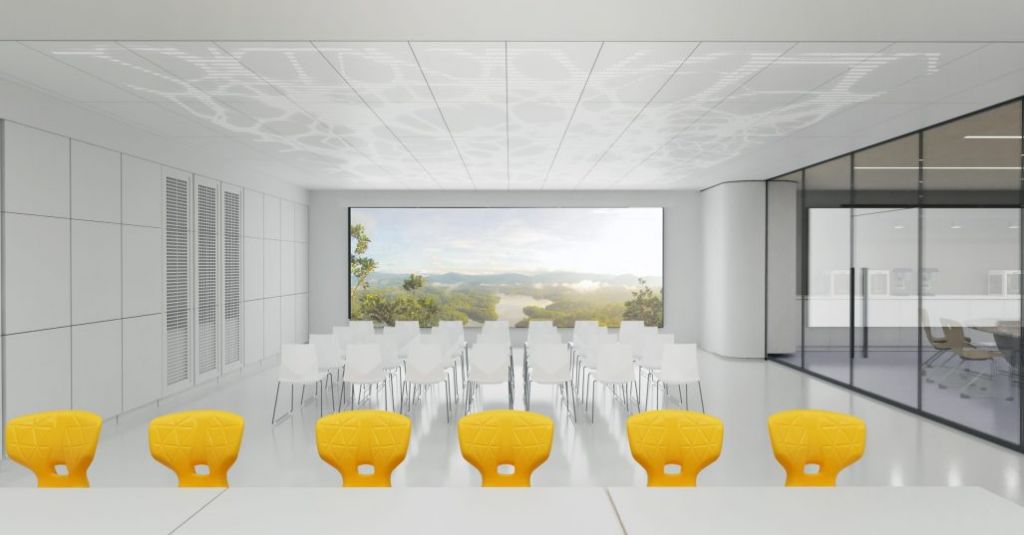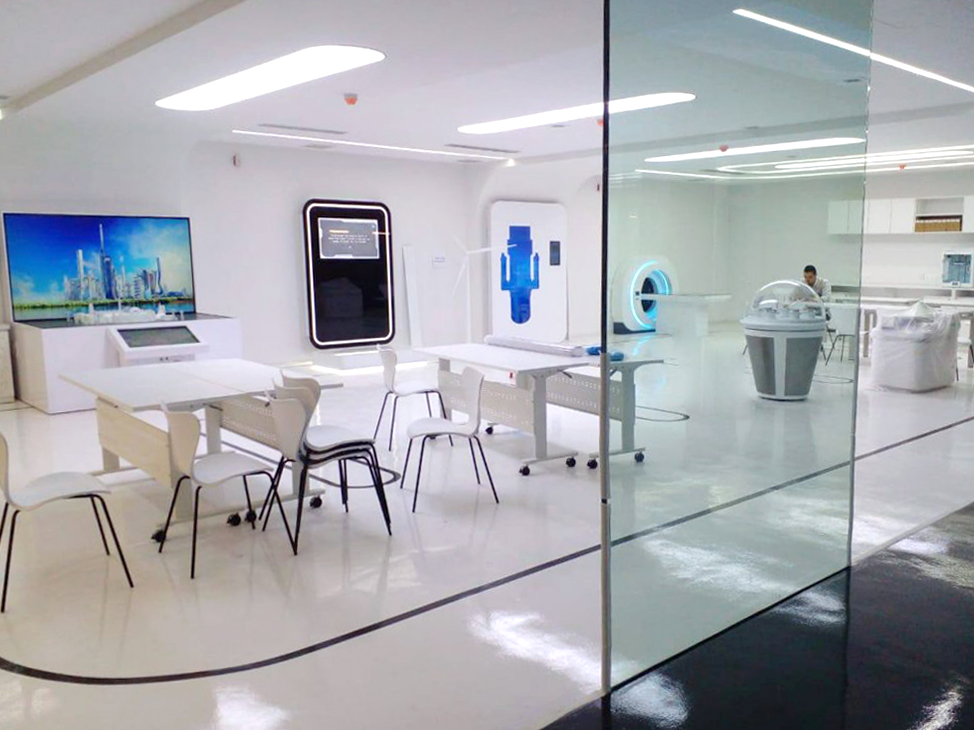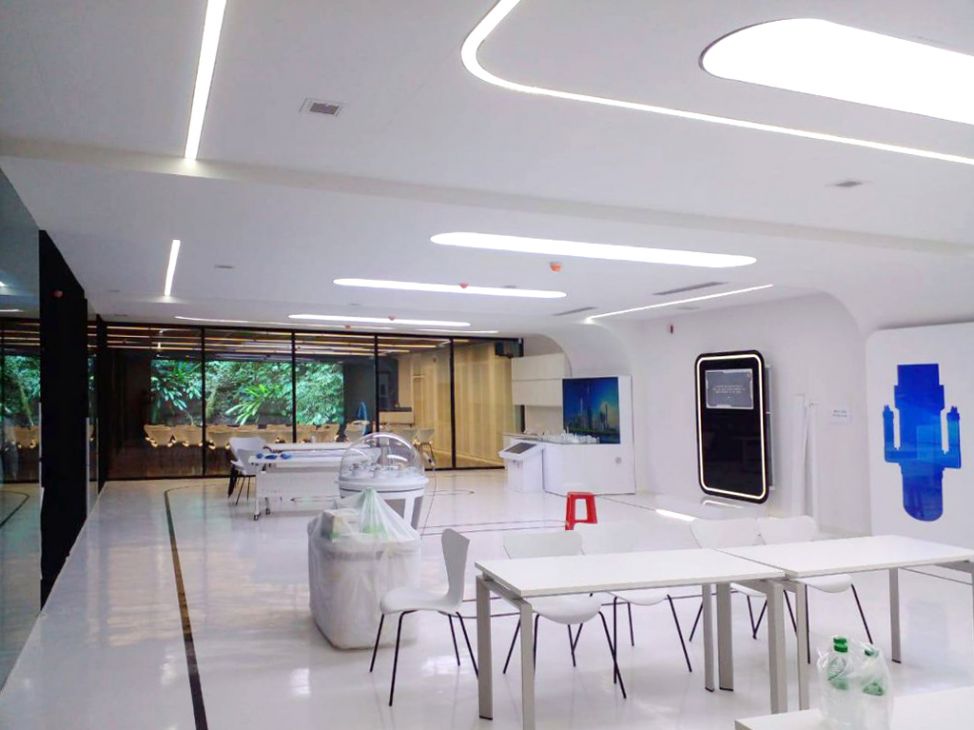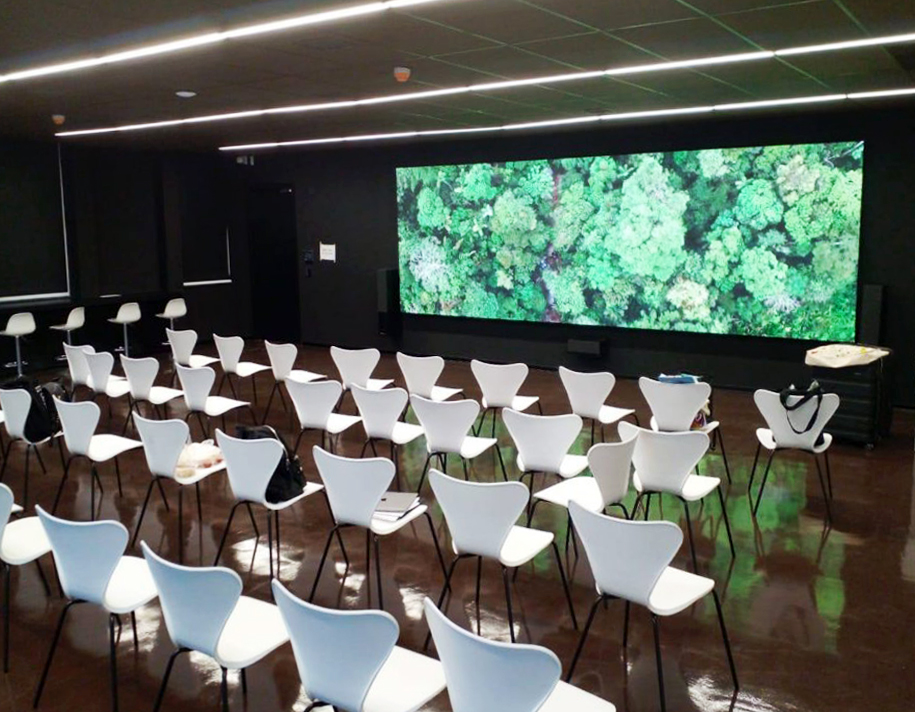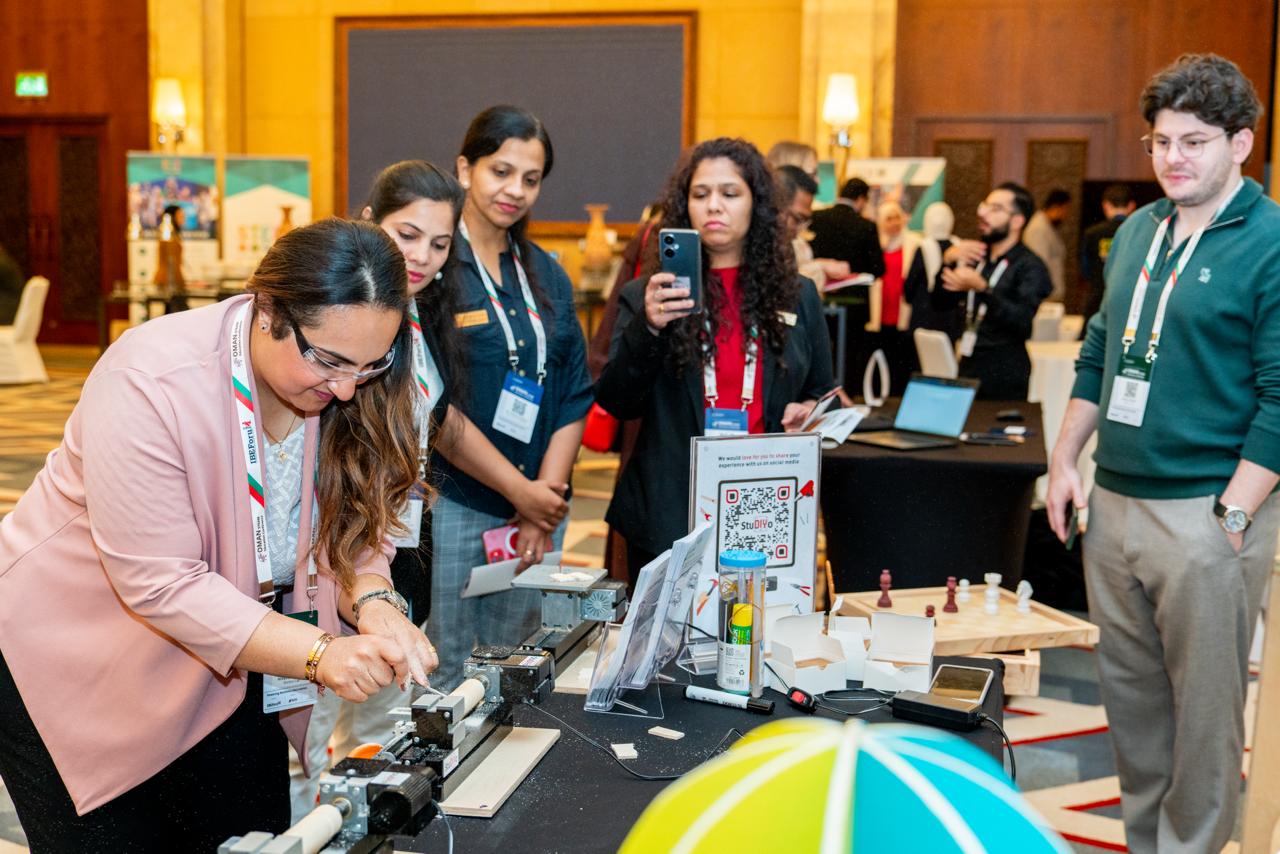In February 2023, the Nuclear Technology Information Center (NTIC) opened in Yangon, Myanmar, a platform for those who are interested in science, primarily for school children. The project was implemented by Rosatom together with the Ministry of Science and Technology of Myanmar. EdDesign LLC was entrusted with the building’s reconstruction. We looked inside to see how the ideas of atomic technology are reflected in the architecture and design of the space.
Concept: EdDesign LLC
Education in Myanmar
Primary and secondary education are fundamental in the country. At the end of primary school, which begins at the age of 5 (children go to grade zero) and continues through grade four, there are one-year craft courses. After receiving secondary education from 5th to 9th grade, one can enter agricultural or engineering schools or take vocational technology courses. Senior school graduates who have successfully completed grades 9–10 have the opportunity to receive higher education. University studies last from 3 to 6 years, depending on the specialty.
The best educational centers are concentrated in Yangon, including the oldest educational institution in Myanmar, the University of Yangon. Founded in 1878 by the colonial authorities of British Burma at the local college of Calcutta University, Yangon (Rangoon) University was considered one of the most prestigious universities in Southeast Asia and one of the leading universities in Asia, with 13,500 students. Following the student unrest in 1996 related to the political crisis in the country, the university was closed. Later, the government reformatted the existing institutes and faculties that made up Yangon University into separate educational institutions scattered across the city, creatingnew educational institutions: Dagon University, East Yangon University, and West Yangon University.
Photo: the University of Yangon
Russia and Myanmar have signed an agreement instituting cooperation in the peaceful use of atomic energy, with the parties agreeing to build a small-capacity nuclear power plant in the republic. The Information Center, created at the initiative of Rosatom, is part of this partnership. According to Tatiana Yanichkina, general director of ANO Energy of the Future (which develops such centers abroad), the center in Yangon is the 25th of the kind. “It is gratifying to know that there is a global demand for our country’s strong expertise in this field, and along with business interests, Rosatom is developing excellent educational projects,” she says.
The Center’s team will work to raise awareness of nuclear technology, develop sustainable solutions, and promote technical education. The center has unique interactive exhibits, a video room with an in-house program of educational films, a variety of kits for experiments, original intellectual games, and many other visitor experiences.
How does the atom help agriculture?
In designing the space, technologists focused on four areas: energy, radiation safety, medicine, and agriculture. The first three raise no questions, but how does the atom help agriculture?
Tatiana Yanichkina says: “Nuclear technology has long been successfully used in agriculture around the world. Just a couple of numbers: according to the UN, approximately one-third of all food produced worldwide (1.3 billion tons) goes to waste every year. And this is despite the fact that one billion people on the planet are suffering from hunger. Among the causes of product losses are insect pests, bacterial spoilage, and premature sprouting of fruit during storage.”
There are three main areas where nuclear technology is applied in agriculture:
1. Breeding new species with beneficial traits, the so-called ‘radiation breeding.’
2. Increased germination and yield, based on findings that seeds irradiated with small doses of radiation germinate faster, and plants are healthier.
3. Crop preservation: irradiated crops can be preserved longer than usual because radiation destroys microorganisms that can spoil them. The knowledge of a modern layman can be greatly enriched by such an unexpected perspective on the peaceful atom.
Interior Spatial Design
The NTIC premises occupy just over 400 square meters. According to Ksenia Surikova, the project's architect , the aesthetics of the space was designed to create a clean, futuristic atmosphere, building positive associations with the safety and environmental friendliness of nuclear technology. “We were thinking about the future, about magical technologies that can have a great impact on our lives,” comments Elena Aralova.
![]()
The space is divided into four functional zones: medical laboratory, experimentation, and design (workshop). Each thematic area has a demonstration exhibit (mock-ups of an MRI machine, a wind generator, and a nuclear power plant; a radiometer, a model of a city, and an agro-unit with hydroponics or aeroponics) – working with these devices transports visitors and students alike into the future.
Photo: Myanmar Center
The architects also designed places for practical daily work: in the workshop, there are 3D printers, scanners, plotters, cutters, engravers , and drill press – all necessary for creating a prototype. In the laboratory, students can find furniture and equipment for working with chemicals and studying physical phenomena. In the experimental area, students have access to equipment for plants, growing them in different soil, and observing different environments.
In the experimental area, students have access to the equipment necessary for working with plants, germinating in various kinds of soil, and observing different environments.
Photo: Myanmar Center
Here, in this space, It is possible to actively use the light: its color, temperature, and intensity can be changed. There are plenty of power and low-current outlets for working with a computer or research equipment and Automated blinds are available for different types of activities.
The transitional working area is also equipped with workstations that have the capability of charging gadgets along the wall with windows overlooking the courtyard. For decoration, the architects suggested making a vegetal wall with live plants. According to the idea of the creators, it symbolizes the environmental friendliness of nuclear technology and creates a comfortable environment. Plants release oxygen, and according to some studies, even simply watching them reduces stress. Here visitors learn that global development of nuclear power helps solve the problem of climate change: all nuclear power plants existing in the world prevent the emission of 2 billion tons of carbon dioxide annually, while the world’s green spaces absorb 2.5 billion tons of CO2.
Photo: Myanmar Center
Architects have long learned to enhance mood through thoughtful interior design . The Myanmar Center has an immersive area for quiet, focused work located in the “green” part of the room next to the plants. The area is equipped with acoustic speakers capable of sharing a musical background that matches the mood and a dynamic light fixture that simulates the sky with clouds – the background changes depending on the time of day.
“Different lighting scenarios, comfortable acoustics, cozy furniture for work, and many scenarios for organizing work inside the space,” Ksenia Surikova describes the result.
Design and Local Materials
All spaces are permeable. “The general enclosure of the room was compensated for by the finishing, in which glass and perforated mesh with white illumination were used as partitions. Living plants were introduced to create the illusion of an endless laboratory of the future,” explains the architect of EdDesign, Olga Babich. “The only barriers to the eye in the room are the zoning cutoffs, which indicate key points of activities – they seem to ground the visitor in the seemingly floating space.”
The architects opted for reliable finishing materials: poured flooring and damage-resistant decorative plaster. Sectional or seamless acoustic ceilings create a comfortable sound-level in each zone. Stylized national ornaments in the design of the doorframes of the storage systems give the Center a local flavor. They are made by local craftsmen.
![]()
A particular challenge was to find materials, equipment, and furniture in Myanmar or nearby states rather than bringing in everything from Russia, China, or Europe. As a result, some of the furniture came from Singapore (chairs, etc.), and some were made in Myanmar (for example, artificial stone sinks and carved fronts for kitchen furniture). Metal frames for cabinets and countertops for furniture were made directly in the Center and then finished with LCB or MDF.
“The ultimate result is an educational space for senior school and college students. The Center can host meetings, lectures, intellectual games, and practical scientific and creative activities. The Center’s equipment can be used in workshops. In addition, the educational space can serve as a co-working,” says Ksenia Surikova.
June 2023


